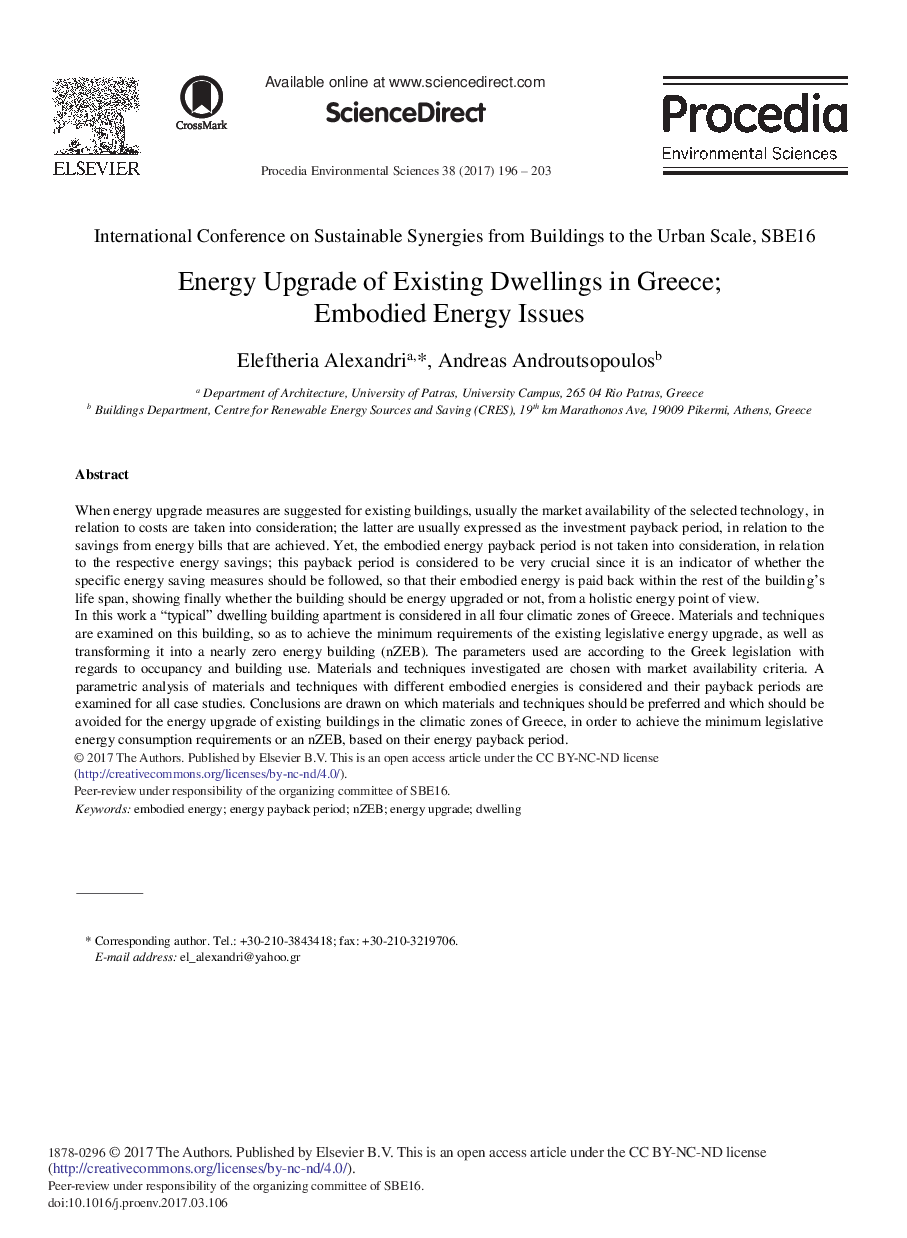| کد مقاله | کد نشریه | سال انتشار | مقاله انگلیسی | نسخه تمام متن |
|---|---|---|---|---|
| 5745030 | 1618606 | 2017 | 8 صفحه PDF | دانلود رایگان |
When energy upgrade measures are suggested for existing buildings, usually the market availability of the selected technology, in relation to costs are taken into consideration; the latter are usually expressed as the investment payback period, in relation to the savings from energy bills that are achieved. Yet, the embodied energy payback period is not taken into consideration, in relation to the respective energy savings; this payback period is considered to be very crucial since it is an indicator of whether the specific energy saving measures should be followed, so that their embodied energy is paid back within the rest of the building's life span, showing finally whether the building should be energy upgraded or not, from a holistic energy point of view.In this work a “typical” dwelling building apartment is considered in all four climatic zones of Greece. Materials and techniques are examined on this building, so as to achieve the minimum requirements of the existing legislative energy upgrade, as well as transforming it into a nearly zero energy building (nZEB). The parameters used are according to the Greek legislationwith regards to occupancy and building use. Materials and techniques investigated are chosen with market availability criteria. A parametric analysis of materials and techniques with different embodied energies is considered and their payback periods are examined for all case studies. Conclusions are drawn on which materials and techniques should be preferred and which should be avoided for the energy upgrade of existing buildings in the climatic zones of Greece, in order to achieve the minimum legislative energy consumption requirements or an nZEB, based on their energy payback period.
Journal: Procedia Environmental Sciences - Volume 38, 2017, Pages 196-203
